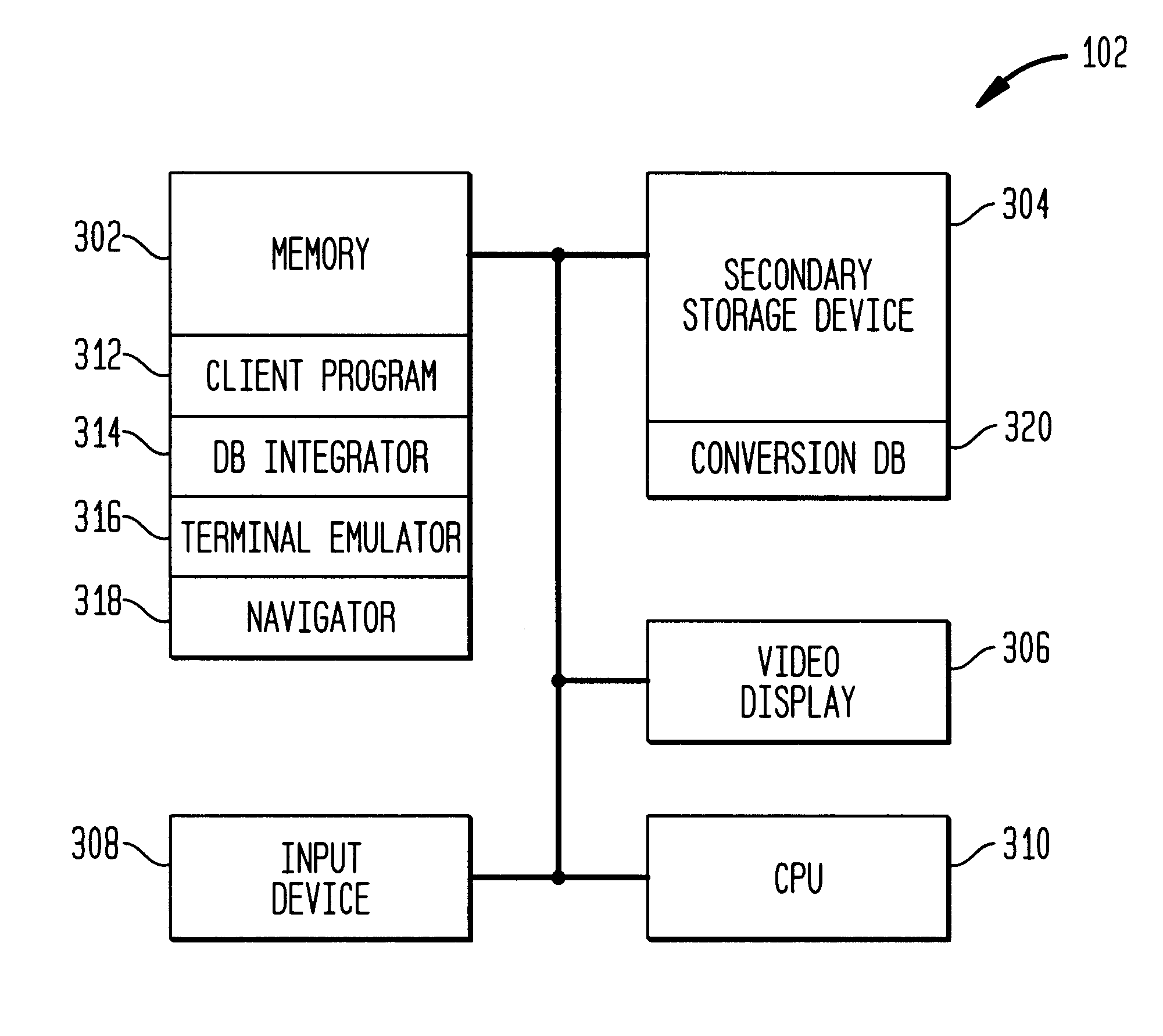Integration of legacy database management systems with ODBC-compliant application programs
a database management system and application program technology, applied in the field of data processing systems, can solve the problems that the odbc-compliant application program cannot access the data contained in the legacy dbms, and the limitation is significant, and achieve the effect of facilitating data access for the client program
- Summary
- Abstract
- Description
- Claims
- Application Information
AI Technical Summary
Benefits of technology
Problems solved by technology
Method used
Image
Examples
Embodiment Construction
An exemplary embodiment of the present invention provides an application program with a database integrator that utilizes the Open Database Connectivity (ODBC) interface so as to enable the application program to access the data in a legacy Database Management System (DBMS). In an exemplary embodiment, the application program ("the client program") is located on a workstation, such as a P.C., and the legacy DBMS is located on a host computer, such as a mainframe. The legacy DBMS is maintained by an application program ("the server program"). That is, the server program is the primary mechanism for accessing the data in the legacy DBMS, and it performs this role by displaying the data of the legacy DBMS on its user interface. The database integrator provides access to the data of the legacy DBMS by issuing commands to the server program via a terminal emulation session. In other words, rather than issuing database commands like the Structured Query Language (SQL) directly to the DBMS...
PUM
 Login to View More
Login to View More Abstract
Description
Claims
Application Information
 Login to View More
Login to View More - R&D
- Intellectual Property
- Life Sciences
- Materials
- Tech Scout
- Unparalleled Data Quality
- Higher Quality Content
- 60% Fewer Hallucinations
Browse by: Latest US Patents, China's latest patents, Technical Efficacy Thesaurus, Application Domain, Technology Topic, Popular Technical Reports.
© 2025 PatSnap. All rights reserved.Legal|Privacy policy|Modern Slavery Act Transparency Statement|Sitemap|About US| Contact US: help@patsnap.com



